Malamute vs Husky: What’s the Difference?
- Not a substitute for professional veterinary help.
We’re not surprised if you can’t decide between a Siberian Husky and an Alaskan Malamute.
Both dogs are hardworking, strong, loyal, and absolutely gorgeous—and they look a lot alike.
It’s true that the husky and the malamute have a lot in common. They’re both spitz breeds—cold weather dogs bred to work hard—and they’re both incredibly smart.
However, there are actually quite a few differences between the breeds. If you’re serious about bringing one into your home, it’s time to learn the difference between huskies and malamutes, so you can be sure you’re choosing the right breed for you.
Mục Lục
Quick Breed History

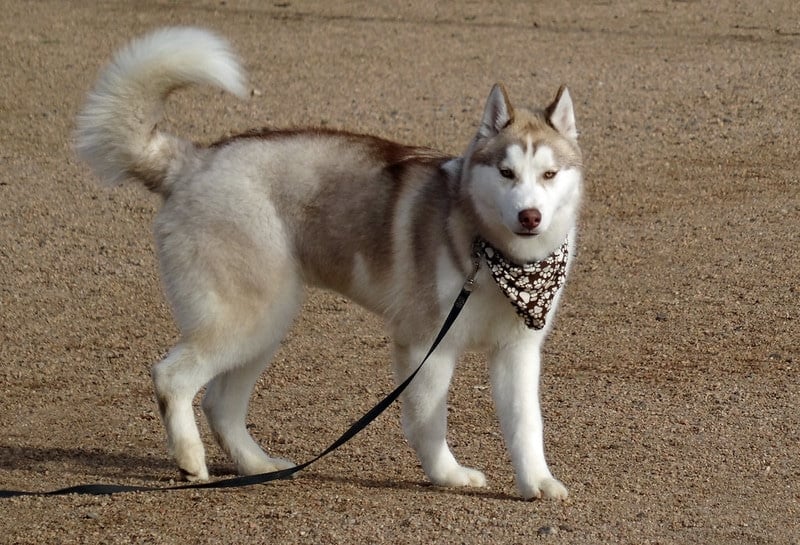
The Siberian husky and the Alaskan malamute are both Arctic working dogs—though, as their names suggest, they do come from different locations. They also have similar but slightly different job histories.
The Alaskan malamute is one of the oldest of the Arctic sled dogs, believed to be a descendant of the original wolf-dogs who accompanied the first travelers over the Bering Strait and into North America. They were designed to haul loads, working as a team to move heavy sleds over long distances, often at a slow but steady pace.
The Siberian husky, on the other hand, was bred for speed in Northern Asia. They hauled light loads at a quick pace and became more well-known when they started winning sled races in the early 1900s.
Coats and Markings
Siberian husky

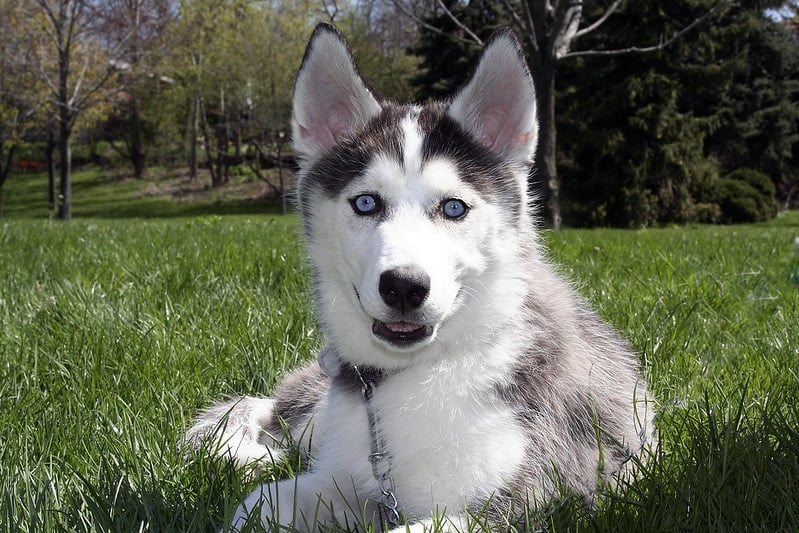
Alaskan malamute

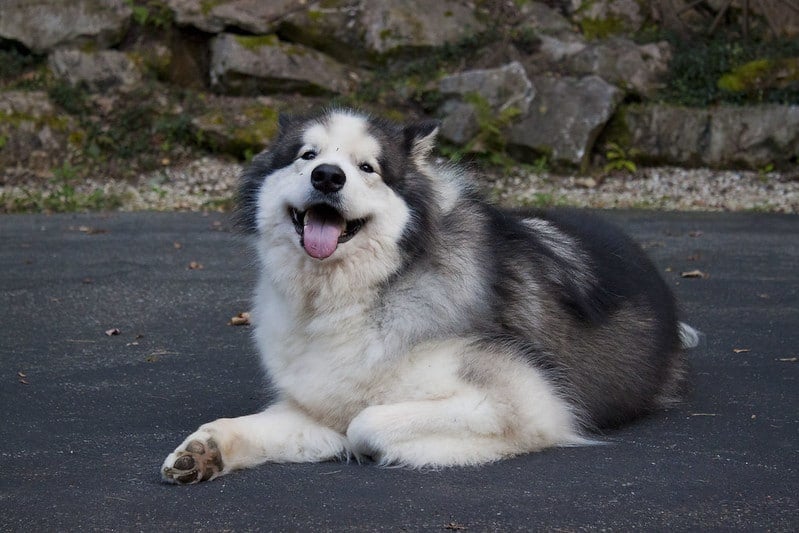
If you look at a Siberian husky or an Alaskan malamute on their own, you may think the two breeds look a lot alike. While it’s true that they do have some of the same characteristics, there are a few ways you can tell the breeds apart based on looks alone.
Both the husky and malamute have thick, double coats. Huskies and malamutes were bred as working dogs in cold climates, so they sport coats designed to keep them warm. Malamutes, however, tend to have longer hair than their husky counterparts.
Both breeds have similar coloring as well; they can display colors ranging from white to black, to gray, and even rust, though there are a few subtle differences in their markings. As puppies, huskies often have bolder, more contrasting coloring, but it tends to fade as a dog ages. Many huskies have face markings that resemble white masks on their faces, with coloring appearing around or over their eyes and down their noses.
Malamutes tend to have more subtle coloring and also sometimes have distinguishable face markings, which the American Kennel Club describes as resembling a cap on their heads.
Both dogs have white underbellies.
Another notable difference between the husky and the malamute is their tails. While the husky’s brush tail points downward, the malamute has a bushier tail that they carry over their back, which tends to wave in the air like a feathered plume.
Finally, even those who aren’t very familiar with the Siberian husky breed are at least familiar with their striking blue eyes. While not all huskies have this feature—some huskies may have one blue eye and one brown eye, and some have two brown eyes—it is a common feature that sets huskies apart.
Size

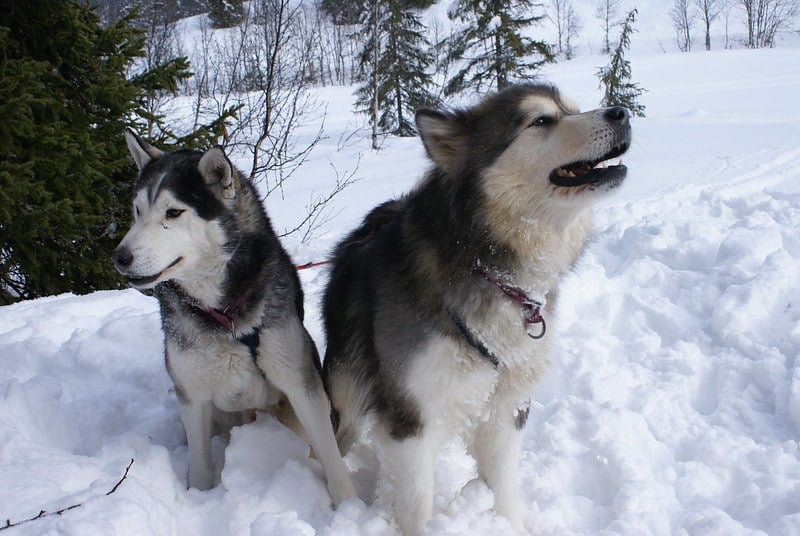
Size is perhaps one of the most noticeable differences between the Siberian husky and the Alaskan malamute. While they’re both sizable dogs, the malamute is the larger of the two—by a lot.
The American Kennel Association says the husky usually stands between 20 and 24 inches tall. Female huskies are usually smaller, and weigh between 35 and 50 pounds, with males weighing in from 45 to 60 pounds.
The malamute isn’t much taller, ranging from 23 to 25 inches tall. Where it really surpasses the husky is in bulk: female malamutes weigh about 75 pounds, and males are even larger at about 85 pounds.
If you’re doing the math, you’re not mistaken. Malamutes can weigh nearly twice as much as huskies, making them the burlier cousin by a long shot.
Care and Grooming

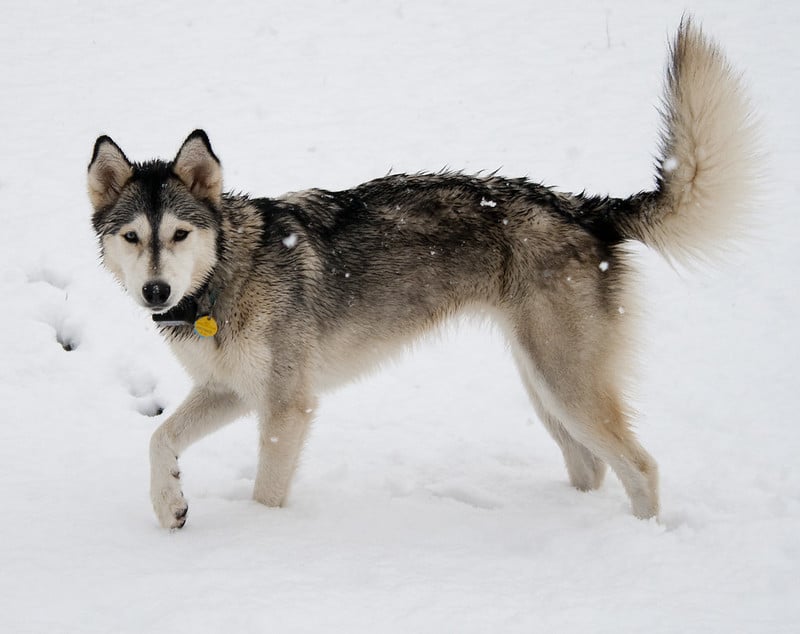
Those thick, beautiful coats sure do look intimidating, don’t they?
While it’s true that both dogs do require some grooming effort, the husky is much more low maintenance than the malamute.
The thick coats of malamutes require daily brushings, with care taken to watch for mats and hot spots—both of which are common, and can cause a lot of trouble if not cared for quickly. They need baths every six to eight weeks and much more frequently if they’re going to be shown.
Huskies require weekly brushings, which sounds like a lot, but is actually pretty laid back compared to the malamute. Even better, though, is the bathing schedule; huskies are fairly self-cleaning and only need a couple of baths per year.
Both breeds have two periods a year where they shed their entire undercoat. This is called blowing the coat, and it takes shedding to the extreme. More frequent brushings can help to keep the hair under control, though some falling hair is inevitable with both huskies and malamutes.
Temperament

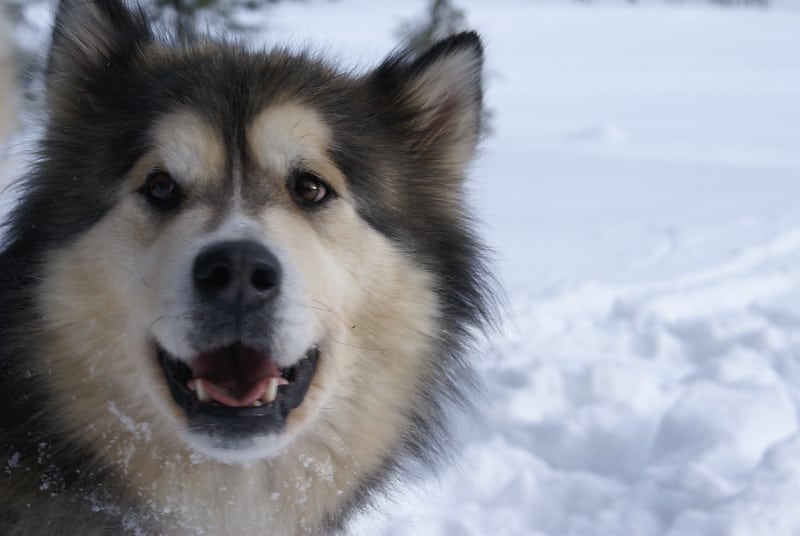
Alaskan malamutes and Siberian huskies have similar temperaments.
Both dogs are very friendly, even with people they don’t know. While this is helpful when welcoming company into your home, it’s not as appreciated if you’re looking for a guard dog. Neither the husky nor the malamute work well as guard dogs—they’re not very vocal and are both just happy to see any people at all—even if they’re total strangers.
Huskies and malamutes are also both pack animals, making them very loyal and loving. The malamute, however, does have an independent side—they tend to relish occasional alone time, and do better than huskies as “only pets.” On occasion, they can be aggressive with other dogs.
Huskies, on the other hand, will spend most of their time with their family (be it people or other household pets) and aren’t fans of being left alone.
Exercise

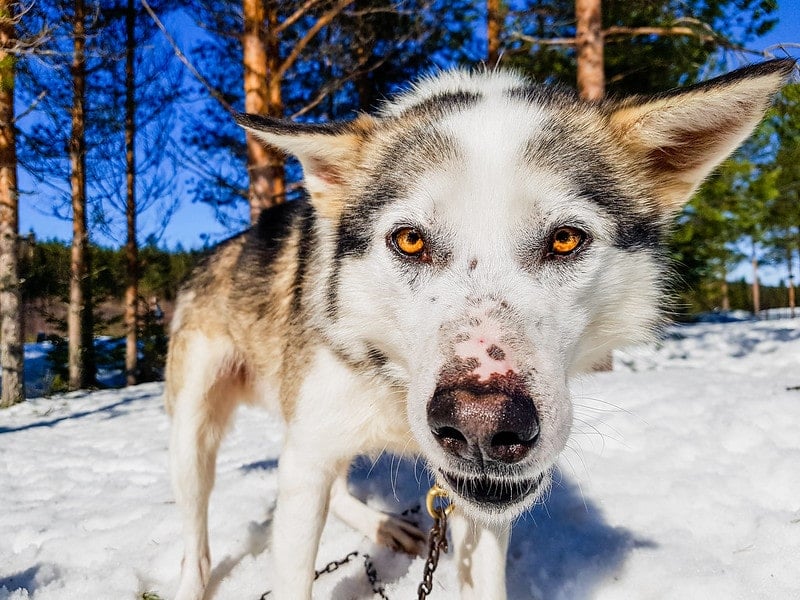
Whether you end up with a Siberian husky or an Alaskan malamute, you’ve got your work cut out when it comes to making sure they get enough exercise.
Gina DiNardo, executive secretary of the AKC, explains to How Stuff Works that while both breeds have a ton of energy due to their working dog nature, they also have different ways they crave to move.
According to DiNardo, huskies were bred to pull sleds quickly, while malamutes were bred to carry heavy loads. While they’re not often needed for those purposes these days, it’s still a job they can feel in their bones.
“In other words, huskies are racers; malamutes are freighters,” she told the publication.
She explains that huskies prefer to run, and can often get all the exercise they need in a large backyard. Malamutes, however, do better when they go on hikes or for a swim, and relish the chance to carry a pack. Consider investing in a canine backpack and letting your malamute carry some of your supplies—or even her own water and bowl.
DiNardo also cautions that since both the husky and the malamute were designed as working dogs, ensuring they get adequate exercise is just as much for you as it is for them.
“Both [breeds] require a job to do and without an outlet for mental and physical energy will resort to bad habits such as chewing and digging to alleviate boredom,” she warns.
Training

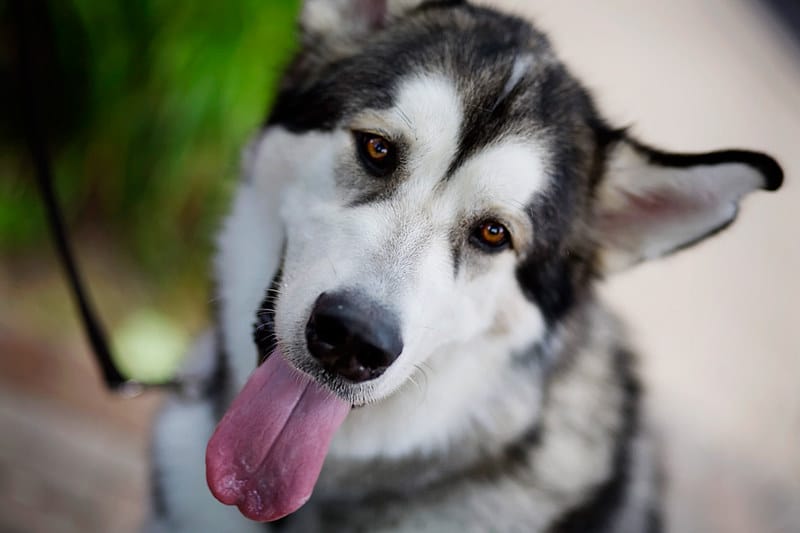
Both the husky and malamute are intelligent dogs, but that doesn’t mean they don’t need proper training.
Like most breeds, they both benefit from socialization and obedience training, starting at an early age. Their high intelligence means they’ll likely take to it quickly—but it also means they mean they need it even more than some breeds.
They’re both assertive and willful and tend to be bossy and dominant if not taught from an early age that they’re not in charge.
Where the breeds differ in this area is house training. According to Pet Guides, malamutes tend to be much more difficult to house train than huskies, often taking a lot of patience and persistence (and paper towels) before the skill is mastered.
Huskies have an instinct to run and should always be on a leash when not in a fenced-in yard. Malamutes, on the other hand, aren’t held back by simple fences. This breed loves to dig (no matter how much you train them not to), so any fences meant to contain them should continue into the ground.
Health

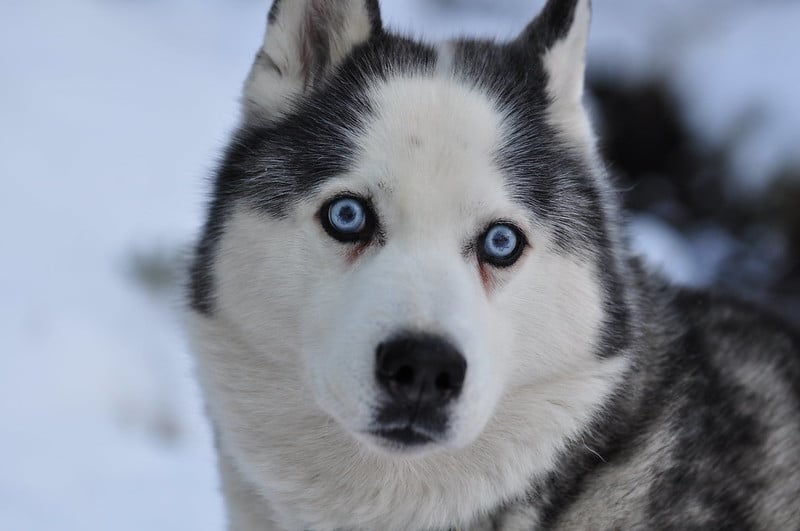
Everyone wants a healthy dog, right? While its’ true that we often have no control over whether our dogs get sick, we can try to choose breeds that aren’t predisposed to many illnesses.
Huskies and malamutes that come from reputable breeders have likely been screened for genetic disorders and common chronic issues, but that doesn’t mean something can’t creep up later in life.
Of the two breeds, huskies are the breed with fewer health issues to watch out for. They are at risk for cataracts and should have regular exams to catch them early should they develop. As with other working dogs, huskies may also fall victim to hip issues as they age.
Malamutes, on the other hand, are predisposed to hip dysplasia, elbow dysplasia, thrombopathia (a platelet disorder), chondrodysplasia (dwarfism), hypothyroidism, inherited polyneuropathy (resulting in nerve pain), von Willebrand’s disease (bleeding disorder), and day blindness. All of this means that if you decide on a malamute, a reputable breeder is more important than ever.
Husky vs. Malamute: The Bottom Line

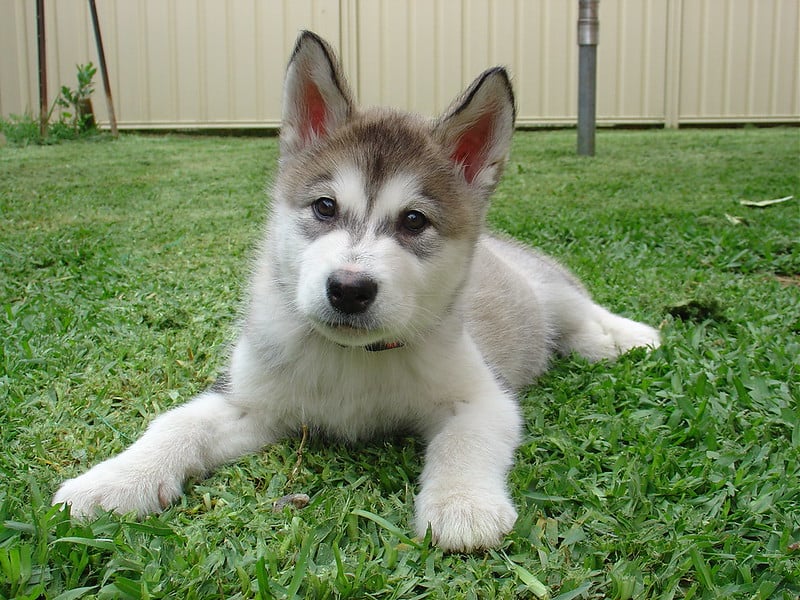
If you’re thinking about adding a Siberian husky or an Alaskan malamute to your household, it’s not a decision to be taken lightly.
Both breeds are loyal and loving furballs that are sure to bring you great amounts of joy, but they also both come with their fair share of issues and responsibilities.
Both the husky and the malamute are very high energy, so it’s important than any potential owner be willing to devote time each and every day to exercise. Without that, you’ll not only have a bored, unhappy dog, but probably a destroyed home. That energy has to go somewhere. Don’t say we didn’t warn you!
Speaking of the state of your home, the soft fur that makes these dogs both gorgeous and hugable also leaves its mark on your space… and on you. It takes a lot of time and effort to keep them brushed, and even then it’s likely that both you and your furniture will be wearing a healthy coat of fur at all times.
If you think the husky or malamute are the dogs for you, be prepared to break the bank. Husky and malamute puppies are pretty comparably expensive, ranging from $800 to $2000 from AKC-approved breeders.
There are also AKC-approved rescue organizations for both huskies and malamutes. Through these groups, you may be able to match yourself with a puppy or adult dog of your chosen breed—sometimes at a lower cost.
Of course, purebred working dogs aren’t for everyone. If the husky or malamute (or their associated costs) aren’t a match for you, remember that there is always an abundance of shelter dogs waiting patiently for their forever families.
Feature images via Flickr/Flickr






